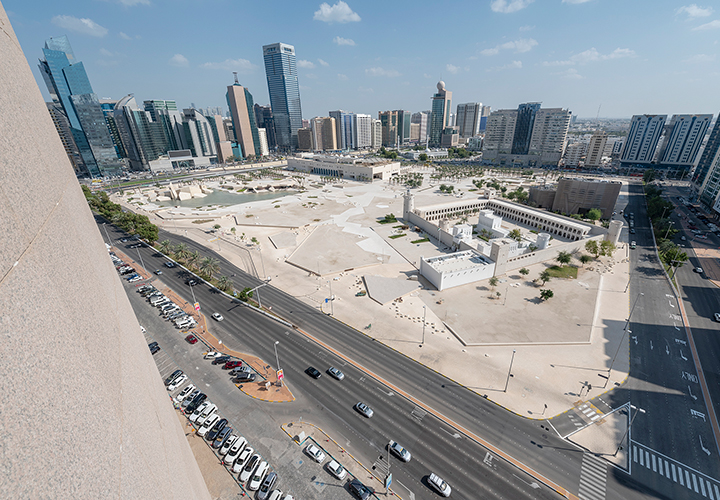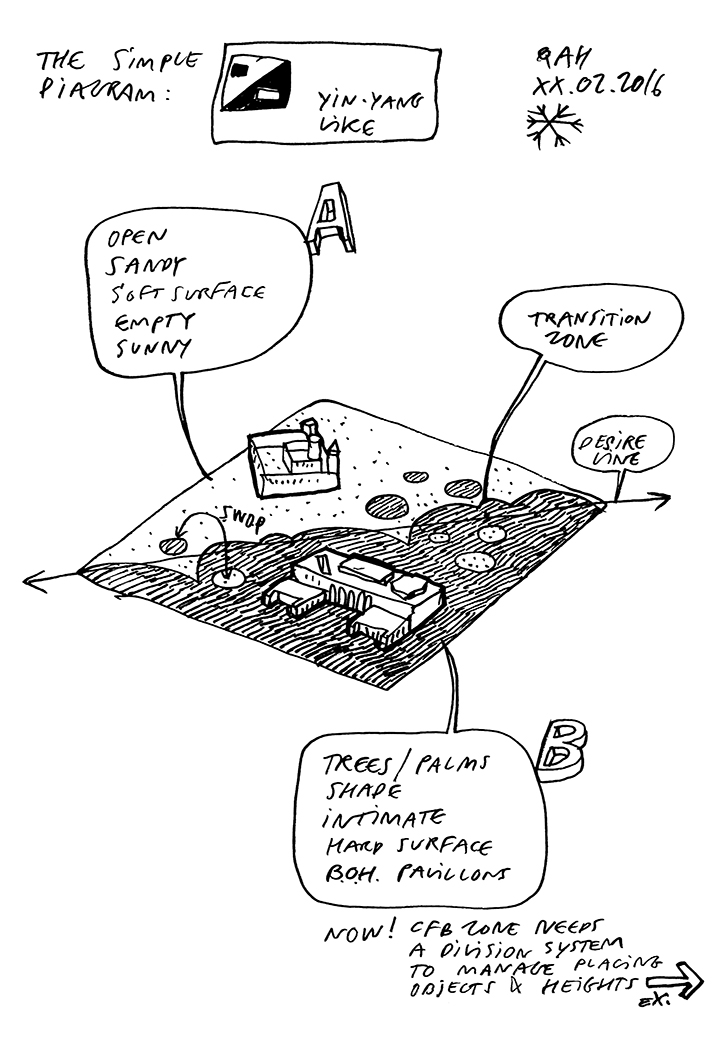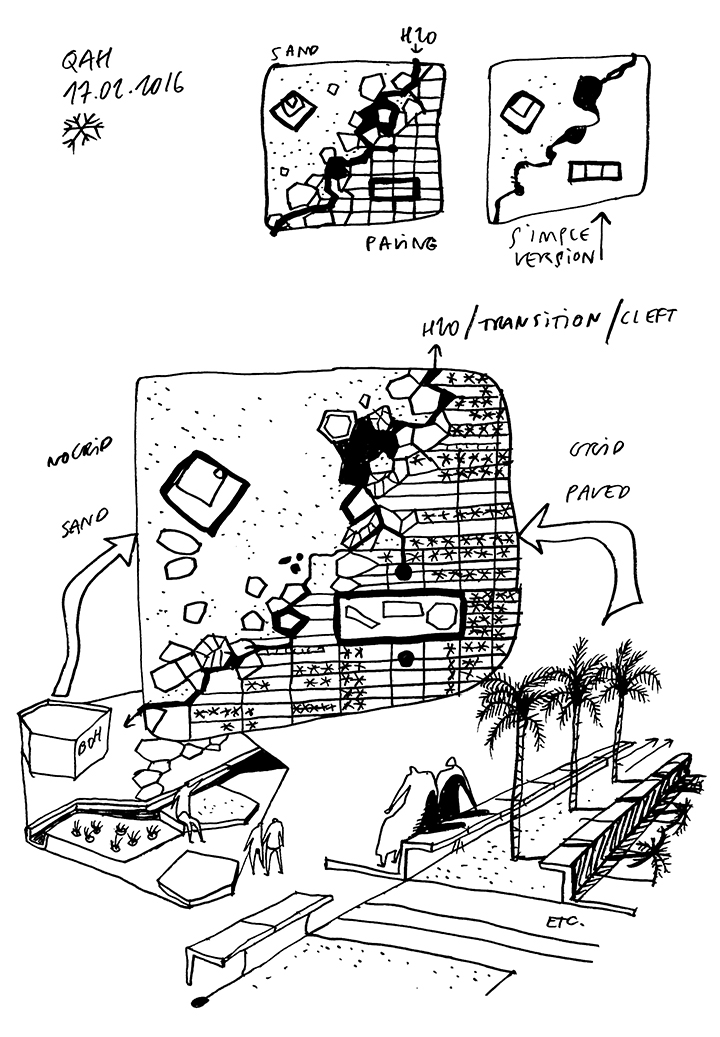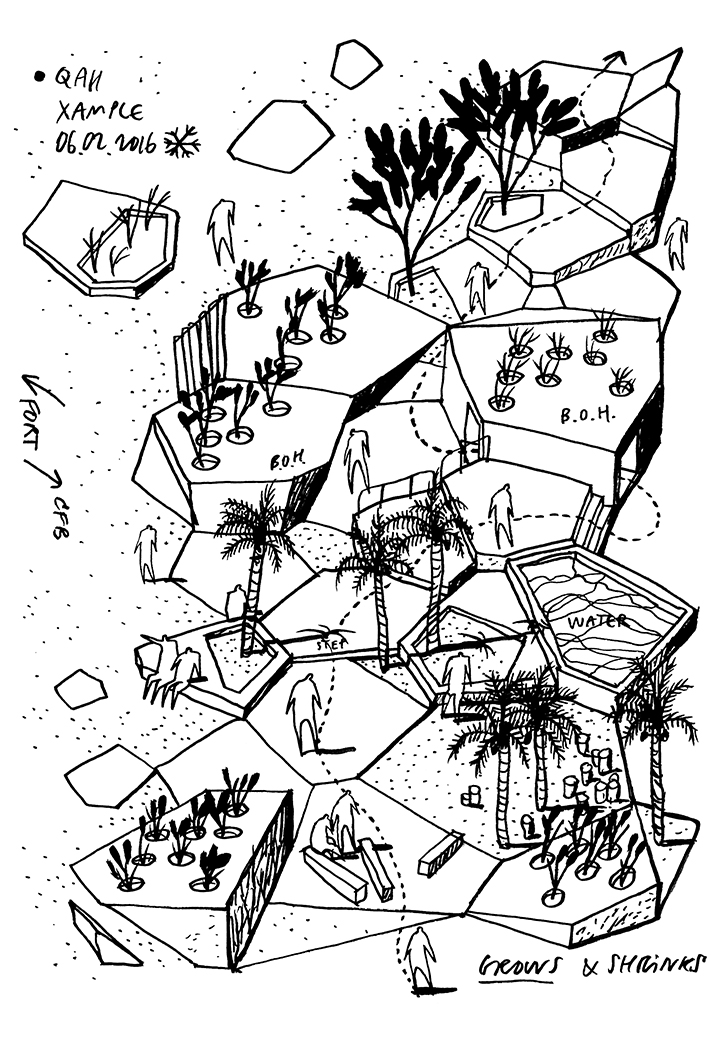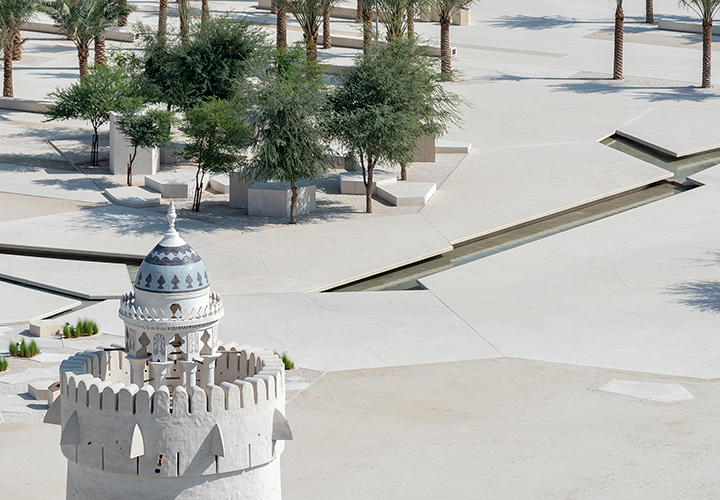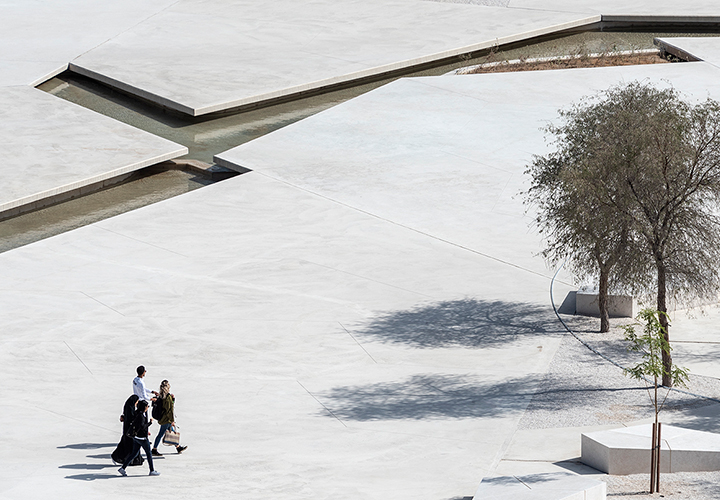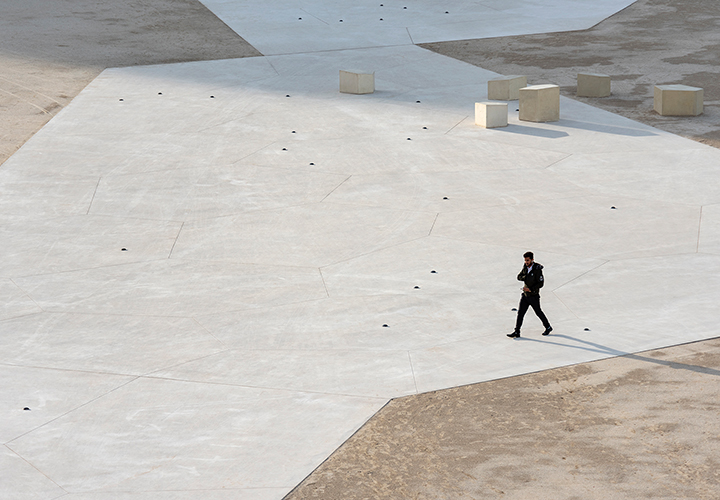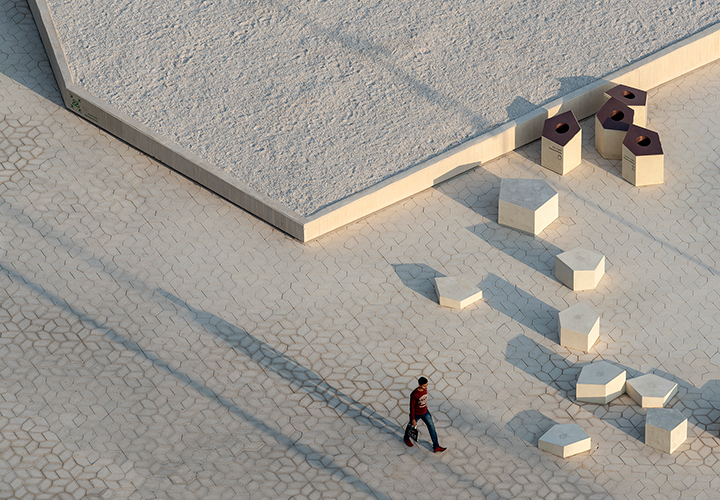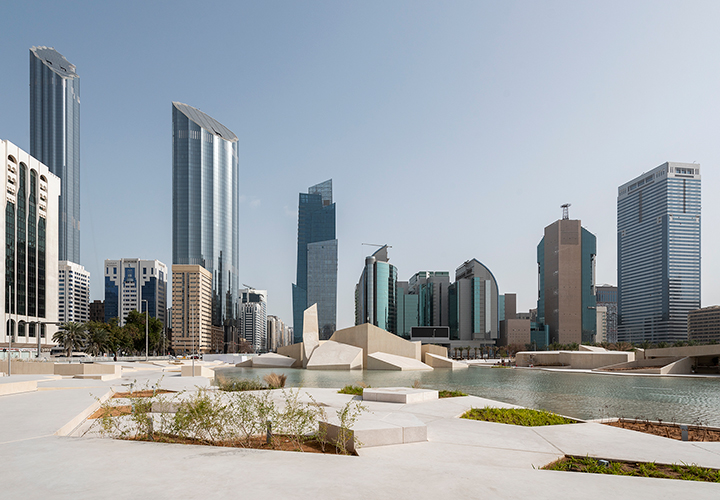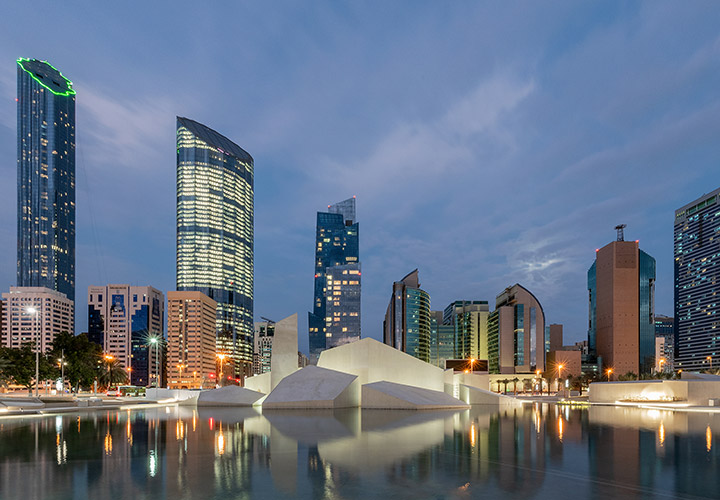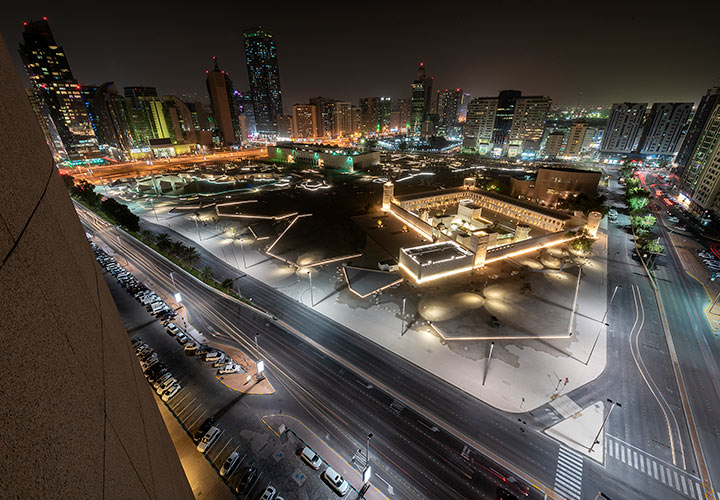AL HOSN MASTERPLAN
- LOCATION: ABU DHABI, UAE
- CLIENT: DEPARTMENT OF CULTURE AND TOURISM – ABU DHABI (DCT ABU DHABI)
- SIZE: 140,000 M²
- YEAR: 2019
- STATUS: COMPLETED
- ARCHITECT: CEBRA
- LANDSCAPE ARCHITECT: CEBRA
- PLANT SPECIALIST: SLA
- ENGINEER: GHD
- SIGNAGE AND WAYFINDING: KOSSMANN.DEJONG
- CONSERVATION MANAGEMENT PLAN: PRODENKMAL
- AWARDS: ARCHITIZER A+ AWARDS 2022 – URBAN AND MASTERPLAN, WAN AWARD 2021 – MIXED USE, IDENTITY DESIGN AWARD 2020 – URBAN LANDSCAPE, AIA MIDDLE EAST 2020 – URBAN LANDSCAPE, AIA MIDDLE EAST 2020 – CULTURE
The Qasr Al Hosn Fort in central Abu Dhabi is the city’s oldest and most important building. Originally built in 1760 as a watchtower to protect only freshwater well on Abu Dhabi island and later extended into a palace, it literally constitutes the birthplace of the modern metropolis Abu Dhabi. The aim of the transformation masterplan is to reinstate the Fort as the cultural heart of the city with a new 140.000 m2 cultural park-scape and the conservation of the site surrounding the historical building and the Cultural Foundation, a 1980’s Grade ‘A’ listed cultural centre of Bauhaus origins. Introducing a new type of locally rooted urban landscape the project combines modernity alongside the Emirate’s maritime and desert heritage in a coherent narrative that communicates between the site’s two contrasting buildings.
Reintroducing the coastal desert landscape
The project emphasizes this duality by dividing the site diagonally into two contrasting landscapes. A plain, soft and open desert landscape around the Fort reinstates the building as a free-standing landmark on sand like it was before the modern city rapidly sprung up. A paved and programmed area with intensified planting surrounds the Cultural Foundation, combining the desert landscape with the modern city grid structure.
The design links the landscapes of the desert with that of the city to emphasize the significance of the relations between traditional Emirati culture, the nature of Abu Dhabi island and the modern metropolitan identity. The park-scape thus serves to communicate the sites’ immense heritage value and reconnect it with the city and its inhabitants by adding new cultural, social and recreational functions.
The two landscapes are connected by a public urban space emerging from formations of cracks and irregular geometric shapes. Together, they create an architectural interpretation of Abu Dhabi Island’s coastal desert landscape of sandbars, mangroves and the salt flats’ distinctive mud crack patterns. These shapes communicate the transition between the natural sand and the urban pavement and formulate a recognizable and scalable narrative rooted in the original landscape.
Both landscape and building
The geometries of the urban landscape intentionally land somewhere between building and landscape, with the tone of the concrete matching the colour of the natural sand. Along the transitional zone, the landscape changes from horizontal planes to slanting surfaces that gradually grow into actual buildings for Food & Beverage facilities, ancillary functions and culminating with the Al Musalla prayer hall at the northern corner of the site. All components, from sitting bollards, surface patterns, lighting concept and building volumes to the interior’s floor plans, doorways and furnishings, are thus subtly integrated into the overall urban landscape topography and merge with the park to be experienced as natural landscape elements, emphasizing the Fort and the Cultural Foundation as the main visual anchors.
Furthermore, the project introduces a meaningful flow through the city by interweaving paths across the site with the adjacent functions and the wider urban fabric, thereby promoting pedestrianism and acting as dynamo for public life. This is supported by the park’s vegetation, which provides shade along the pathways and pocket spaces, as well as large overhangs created by the landscapes slanting surfaces forming the Food & Beverage buildings along the water feature, which support a comfortable climate outdoor activities independent from artificial air-conditioning.
Other cultural projects by CEBRA
Experimentarium
Cultural Foundation
Al Musalla

